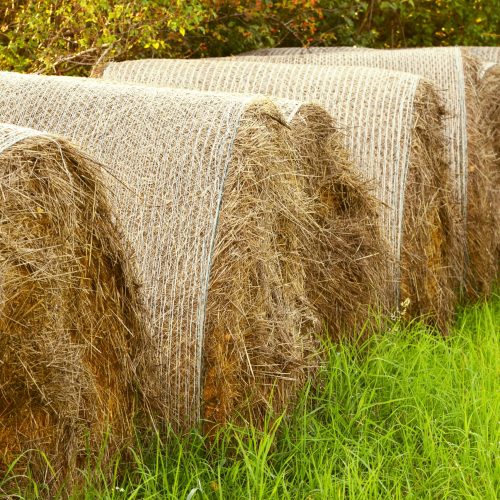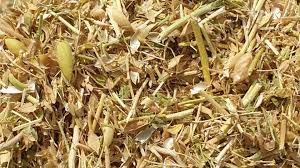SEASONAL STRAW
Seasonal straw and hay are crop residues made up of dry stems and leaves left behind after harvesting legumes, cereals, and other crops. These straws, often amounting to nearly half of the total harvestable vegetation, are highly fibrous and indigestible for humans. However, they play a crucial role in agriculture and rural communities, serving various purposes.
Within the farm economy, straw, stovers, and chaff are valuable for increasing profitability, especially in livestock feeding. Beyond agriculture, straw has non-agricultural applications such as biofuel production, construction, crafts, clothing, and paper making. In farming, straw is an integral part of large-scale operations, used both as feed and for manure production. It was essential for soil fertility before the introduction of inorganic fertilizers and mechanization.
SEASONAL STRAW EXPORT BY SHARP AGES
In many developing countries, seasonal straw for animals has often been regarded as having little value and was typically burned in fields. However, this practice has been curbed by environmental regulations and advancements in improving straw digestibility.
For small-scale farmers, the demand for straw bales continues to grow, largely due to reduced access to free grazing areas. Sharp Ages, one of Pakistan’s leading animal feed suppliers, offers a wide range of seasonal low-cost straw bales. If you’re looking to purchase straw in bulk or searching for hay suppliers or exporter nearby, Sharp Ages should be your top choice.

Mong Straw
Sharp Ages provide top-quality Mong straw for export. Our Mong straw, used as animal feed, contains protein levels ranging from 1% to 8%, and its fiber content varies from 25% to 65%. We pride ourselves on being the ideal animal feed supplier for your needs. The Mong straw we supply undergoes feed analysis in a laboratory, followed by adjustments to ensure it meets the nutritional requirements of farm animals. This makes it a highly viable option for animal feed suppliers. Sharp Ages is one of the largest animal feed exporters in Pakistan. Mong straw generally offers superior feed quality compared to other types of straw, making it a more suitable choice for animal feed. Our Mong straw stands out for its higher quality than other options available in the market. We also offer Year-old straw, which is often more palatable than fresh Mong straw. A high-quality Mong straw bale can constitute up to 75% of a cow’s diet when fed properly, while lower-quality straw might only make up around 50% of an animal’s diet. Mong straw digests more slowly than hay, allowing cows to consume less straw. Typically, a cow can consume up to 1.25% of her body weight in straw compared to hay daily.

Peanut Straw
Peanuts are a major oilseed crop in Pakistan, and during harvest, large quantities of peanut leaves and stems become available as peanut hay for livestock feed. Extensive studies have shown that peanut straw hay can partially replace concentrates in the diets of milk cows and other farm animals. In many regions of Pakistan, peanut straw is a common feed for various farm animals, particularly cows.
The DCP (Digestible Crude Protein) value of peanut straw is higher compared to non-leguminous hays and is comparable to leguminous hays such as cowpea or chickpea straw. According to Sharp Ages, peanut straw also has a superior energy value compared to most other grass hays. It can be safely fed alone or mixed with wheat bran and wheat straw to meet the basic nutritional needs of cows and other milk-producing animals, potentially increasing milk production by up to 5 kg daily. Buy hay bales of Chickpea straw at “Sharp Ages“

Chickpeas Straw
Chickpea straw is a major by-product of chickpea cultivation, produced in significant quantities after the chickpea harvest. Although detailed nutritional information is limited, Sharp Ages studies have analyzed the fiber and non-fiber components, dry matter degradability, and metabolizable energy (ME) of chickpea straw for animal feed.
We provide top-quality chickpea straw, derived from an important grain legume known for its edible seeds. The chickpea plant is fast-growing, with the ability to branch quickly and reach heights of 20 to 60 centimeters, and occasionally up to 1 meter. It features a deep taproot extending up to 2 meters and numerous lateral roots that explore the upper soil layers (15-30 cm). Various by-products of chickpea cultivation and processing, including low-grade and culled chickpeas, bran, husks, straw, and chickpea hay, are used globally for animal feed. We are a leading supplier and exporter of premium chickpea straw from Pakistan.

